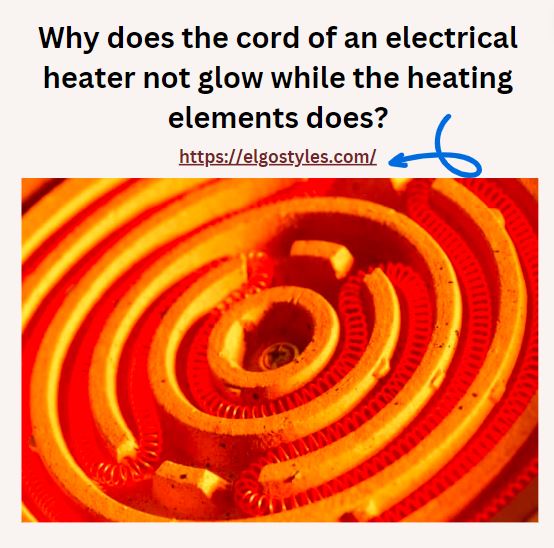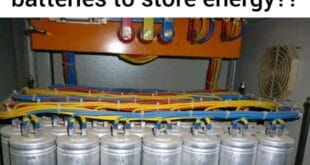Answer:
The cord of an electrical heater does not glow because it is made of a material with higher electrical resistance compared to the heating elements. The high resistance in the cord prevents significant current flow, minimizing heat generation and eliminating the glow effect.

Reasoning:
Material Composition: The cord is typically made of materials with higher resistance, such as copper or aluminum, designed to withstand the electrical load without excessive heat generation.
Ohm’s Law: Ohm’s Law (V = I * R) governs the relationship between voltage (V), current (I), and resistance (R). The cord’s higher resistance limits the current flow, reducing heat generation.
Safety: Using a material with higher resistance in the cord helps prevent overheating, ensuring the safety and longevity of the electrical heater.
FAQs:
Q: Why doesn’t the cord glow like the heating elements?
A: The cord has higher electrical resistance, limiting current flow and preventing significant heat generation, unlike the heating elements.
Q: What materials are commonly used for heater cords?
A: Copper or aluminum, materials with higher resistance, are commonly used for heater cords.
Q: Does the cord heat up at all?
A: The cord may experience a slight temperature rise, but its higher resistance prevents it from reaching a temperature where it would glow.
Q: Can using a lower resistance material for the cord be safer?
A: No, using a lower resistance material could lead to excessive current flow, overheating, and pose safety risks.
Q: Is the cord’s resistance a deliberate design choice?
A: Yes, the cord’s higher resistance is a design choice to control current flow, prevent excessive heating, and ensure safety.
Q: Can the cord’s resistance change over time?
A: The resistance remains relatively constant unless the cord is damaged or undergoes significant wear.
Q: How does the cord contribute to overall heater safety?
A: The cord’s design prevents overheating, fire risks, and ensures safe operation of the electrical heater.
Q: Does the length of the cord impact its resistance?
A: Longer cords may have slightly higher resistance, but it is typically designed within safe limits.
Q: Are there safety standards for heater cord materials?
A: Yes, materials must meet safety standards to ensure the cord’s reliability and safety.
Q: Can a damaged cord pose safety risks?
A: Yes, damage to the cord may alter its resistance, leading to increased heat generation and safety hazards.
 Electrical Engineering World Wiring a Brighter Tomorrow!
Electrical Engineering World Wiring a Brighter Tomorrow!



